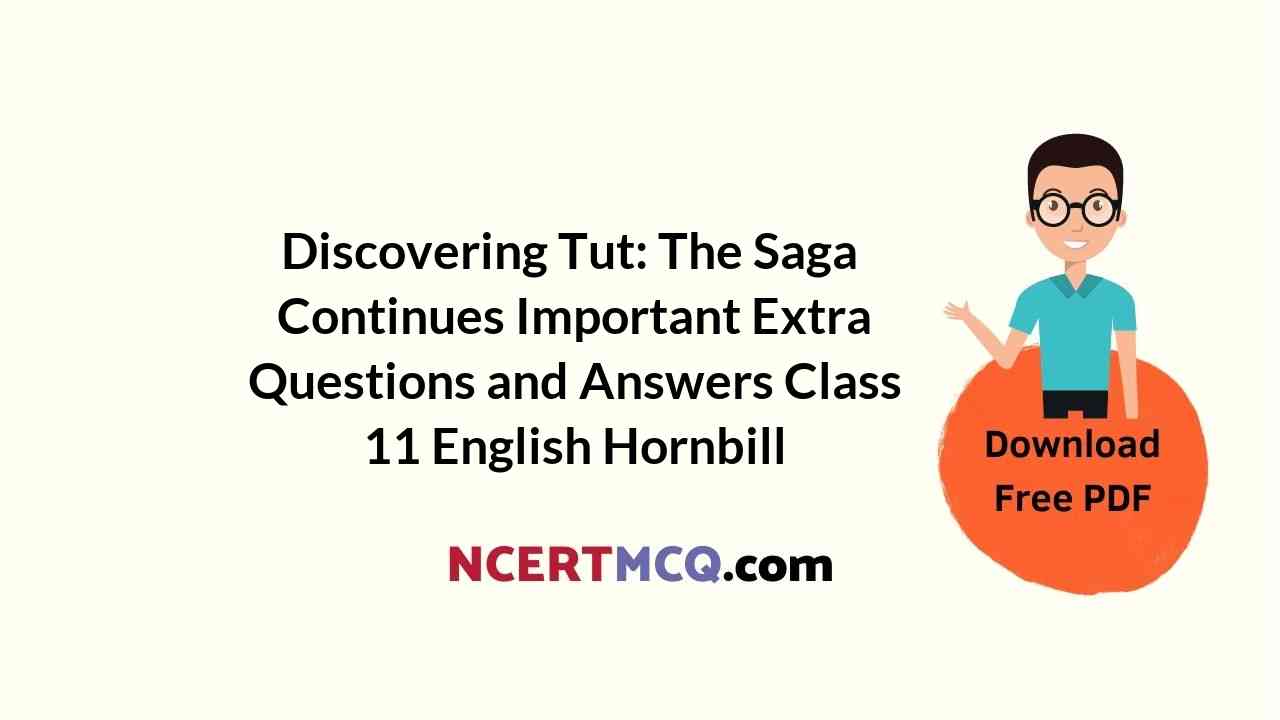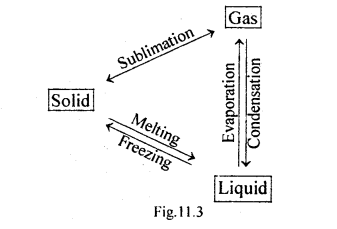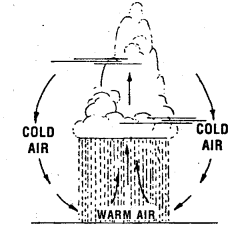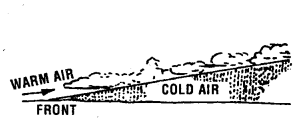Here we are providing Online Education for We’re Not Afraid to Die… If We Can All Be Together Important Extra Questions and Answers Class 11 English Hornbill, Extra Questions for Class 11 English was designed by subject expert teachers. https://ncertmcq.com/extra-questions-for-class-11-english/
Online Education for We’re Not Afraid to Die… If We Can All Be Together Important Extra Questions and Answers Class 11 English Hornbill
We’re Not Afraid to Die… If We Can All Be Together Extra Questions and Answers Short Answer Type
We Are Not Afraid To Die If We Are Together Extra Questions Question 1.
Who was the narrator? What adventurous task did he take on?
Answer:
The narrator was a thirty-seven-year-old businessman, who along with his family, set from Plymouth, England, on a round-the-world voyage like Captain James Cook had done 200 years earlier in a 30-ton wooden-hulled boat.
We Are Not Afraid To Die Extra Questions Question 2.
How did they prepare for this onerous task?
Answer:
For sixteen years, they spent all their leisure time improving their seafaring skills in British waters. They bought a boat, Wavewalker, a 23-metre, 30-ton wooden-hulled vessel that had been professionally built. They spent months fitting it out and testing it in the roughest weather that they could find.
We Are Not Afraid To Die Question Answer Question 3.
How many people were there in the boat?
Answer:
The four of them the narrator, his wife Mary, son Jonathan, and daughter Suzanne sailed for 105,000 kilometres to the west coast of Africa to Cape Town. They took on two crewmen with them an American, Larry Vigil, and a Swiss, Herb Seigler, before settling sail on the southern Indian Ocean.
We’re Not Afraid To Die Extra Questions Question 4.
What was the first indicator of rough weather?
Answer:
On their second day out of Cape Town, they encountered strong winds. For the next few weeks, the gales blew continuously. The gales did not worry the narrator but the sizes of the waves were disturbing.
Class 11 English Hornbill Chapter 2 Extra Questions And Answers Question 5.
What ordeal awaited them on 2 January?
Answer:
After they celebrated Christmas, the weather changed for the worse. On the early morning of 2 January, the waves became huge. As the ship rose to the top of each wave, they could see the vast sea rolling towards them. The wind seemed to be howling.
Class 11 English Hornbill Chapter 2 Extra Questions Question 6.
What measures did they take to counter this ordeal?
Answer:
They dropped the storm jib and lashed a heavy mooring rope in a loop across the stem to slow the boat, and then double-lashed everything, went through their life-raft drill, attached lifelines, put on oilskins and life jackets.
We Are Not Afraid To Die Question And Answers In Short Question 7.
What happened on the evening of 2 January?
Answer:
On the evening of 2 January there was a lull before the storm. As the sky grew dark, they heard a growing roar, and saw a massive cloud rising at the rear of the ship. To their dismay, it was a huge wave, almost twice the height of other waves, with a fearsome breaking top.
We Are Not Afraid To Die Important Questions Question 8.
What happened when they tried to ride over the wave?
Answer:
When they tried to ride over the wave, there was a loud blast that shook the deck. Water gushed over the ship, the narrator’s head hit the wheel and he was thrown overboard into the water. He accepted his impending death, and while he was losing consciousness, he felt peaceful.
Important Questions Of We’re Not Afraid To Die Question 9.
How did the narrator get back to the ship after having been thrown into the sea?
Answer:
After the narrator felt he was losing consciousness, his head suddenly popped out of the water. A few metres away, he saw Wavewalker, nearly overturned. Then, a wave threw it upright. He grabbed the guardrails and sailed through the air into Wavewalker’s main boom. The waves tossed him onto the deck like a rag doll.
We Are Not Afraid To Die Class 11 Important Questions Question 10.
How did they manage to throw out water from the ship?
Answer:
With the narrator’s wife, Mary, at the wheel, the narrator half-swam, half-crawled into the children’s cabin, where he found a hammer, screws and canvas, and struggled back on deck. He secured waterproof hatch covers across the wide-open holes. With Herb and Larry’s assistance, he managed to throw out the water.
We Are Not Afraid To Die Extract Based Questions Question 11.
What were the difficulties that they faced that night?
Answer:
The night was bitterly cold, and they were pumping water out of the ship, steering the ship and working the radio. Moreover, they were getting no replies to their calls for help, as they were in a remote comer of the world.
We’re Not Afraid To Die Class 11 Extra Questions Question 12.
What injuries did Sue sustain? What does it reveal about her?
Answer:
Sue had bumped her head and there was a big bump above her eyes. She had two black eyes, and a deep cut on her arm. She showed remarkable maturity for a seven-year-old when she said that she didn’t want to worry them when her father was trying to save all of them.
We Are Not Afraid To Die Short Question Answer Question 13.
After the water level receded, what was their next concern? What did they decide to do?
Answer:
Having survived fifteen hours since the wave hit, the narrator checked the charts and calculated that there were two small islands a few hundred kilometres to the east. One of them was lie Amsterdam. Knowing Wavewalker would not hold for much longer, they aimed to reach the island.
We Are Not Afraid To Die Class 11 Extra Questions Question 14.
“But our respite was short-lived.” Why does the narrator say so?
Answer:
By 4 January, they ate their first meal in almost two days after pumping out most of the water. But their breather was short-lived. Soon after, black clouds gathered and the wind rose to 40 knots; the sea kept getting higher. The weather deteriorated and by dawn on 5 January, the situation turned hopeless, again.
We Are Not Afraid To Die Question Answer Extra Question 15.
What did Jon say that left the narrator speechless?
Answer:
When the narrator tried to comfort and reassure the children, Jon said that they were not afraid of dying if all four of them could be together. The narrator could find no words to respond, but he left the children’s cabin determined to fight the sea with everything he had.
Question 16.
What action did the narrator take, after having decided to fight the sea?
Answer:
To protect the weakened starboard side, he decided to heave to with the undamaged port hull facing the oncoming waves, using an improvised sea anchor of heavy nylon rope and two 22-litre plastic barrels of paraffin.
Question 17.
How did the narrator make his calculations to find out their position on 6 January?
Answer:
The Wavewalker rode out the storm and by the morning of 6 January, the narrator worked on wind speeds, changes of course, drift and current in an effort to calculate their position.
Question 18.
What instruction did the narrator give Larry? What did he expect?
Answer:
At about 2 p.m., the narrator asked Larry to steer a course of 185 degrees and said that if they were lucky, they would see the island at about 5 p.m. He was not optimistic himself so he went below, climbed on his bunk and slept off.
Question 19.
Why did the narrator feel that he was not the best captain? What was the surprise in store for him?
Answer:
When Jon called him the best daddy in the whole world and the best captain, the narrator was dejected for not being able to locate the island, so he refuted the statement. The truth was that the island was just in front of them.
Question 20.
Why did the narrator feel that it was the most beautiful island?
Answer:
The narrator saw lie Amsterdam. It was an unwelcoming piece of volcanic rock, with little vegetation, but to them it was the most beautiful island in the world because it held for them the hope of their survival.
We’re Not Afraid to Die… If We Can All Be Together Extra Questions and Answers Long Answer Type
Question 1.
The narrator and his wife had longed to sail. What did they do to accomplish their dream?
Answer:
The narrator and his wife had always dreamt of sailing. They wanted to do a round-the-world voyage like Captain James Cook had done 200 years earlier. For sixteen years they spent all their leisure time improving their seafaring skills in the British waters. They took a boat, Wavewalker, that was 23 metres, and weighed 30 ton. It had been professionally built and they spent months fitting it out and testing it in the roughest weather that they could find. Finally, in July 1976, the family set out to sail from Plymouth, England.
Question 2.
What were the troubles that they faced on the morning of 2 January? How did they counter nature’s wrath?
Answer:
When they reached the southern Indian Ocean, one of the world’s roughest seas, they began to encounter strong winds. Apart from the gales, the size of the waves was alarming. It was as high as the main mast. Things became worse on 2 January when the waves became huge. The ship rose to the top of each wave and they could see endless waves approaching them, and the screaming of the wind seemed horrifying to them. To slow the boat down, they dropped the storm jib and lashed a heavy mooring rope in a loop across the stem. Then they double-lashed everything, went through their life-raft drill, attached lifelines, donned oilskins and life jackets.
Question 3.
“The first indication of impending disaster came at about 6 p.m.” What was the warning? What was the disaster that followed?
Answer:
The first warning of the approaching disaster was the threatening stillness. The wind dropped, and the sky grew dark. Then with a roar, an enormous cloud seemed to come after the ship. It turned out to be a vertical wave, almost twice the height of the other waves, and had fearsome breaking crests. When they tried to move over it, a monstrous explosion shook the deck. Water broke over the ship, and the narrator’s head hit against the wheel and he was thrown into the sea. The narrator accepted his impending death, and felt he was losing consciousness. But soon, he was tossed back into the ship like a ‘rag doll’.
Question 4.
How did they deal with the water that had gushed into the ship?
Answer:
As Mary took control of the wheel, the narrator made his way towards the hatch. Larry and Herb were pumping out water frantically. He saw broken timbers hanging, the starboard side bulged inwards; clothes, crockery, charts, tin and toys sloshed about in deep water. So he struggled into the children’s cabin, found a hammer, screws and canvas, and laboured back on deck. He managed to stretch the canvas and secure waterproof hatch covers across the gaping holes.
Some water continued to stream below, but most of it was now being deflected over the side. The problems cropped up when the hand pumps started to block up with the fragments floating around the cabins and the electric pump short-circuited. The water level rose ominously. On the deck he missed the two spare hand pumps, forestay sail, jib, dinghies and the main anchor, which were pitched overboard. He found another electric pump and connected it to an out-pipe, and this worked.
Question 5.
Why were they desperate to look for an island? How did they manage?
Answer:
After having survived for fifteen hours since the wave hit, they knew that Wavewalker could not hold together long enough for them to reach Australia. The narrator checked the charts and calculated that there were two small islands a few hundred kilometres to the east. One of them, lie Amsterdam, was a French scientific base. But the waves had put the auxiliary engine out of action. To make matters worse, the weather continued to worsen. The wind finally eased, and the ship rode out the storm by the morning of 6 January.
The narrator deliberated on wind speeds, changes of course, drift and current in an effort to calculate their position. What he could determine was that they were somewhere in 150,000 kilometres of ocean looking for a 65 kilometre-wide island. About 2 p.m., he asked Larry to steer a course of 185 degrees. He expected to see the island at about 5 p.m., and eventually reached it by 6 p.m.
Question 6.
The children braved the situation more maturely than their years. Discuss.
Answer:
The children, certainly braved the situation more maturely than their years. Sue had her head hit and swollen, worryingly. She had two huge black eyes, and a deep cut on her arm. She did not make much of her injuries because she did not want to worry her father when he was trying to save them. Jon, the narrator’s six-year- old son, assured him that they were not afraid of dying if the family could all be together.
When Sue’s head injury worsened with her blackened eyes narrowed to slits, she held on to her spirit and gave the narrator a card with drawn caricatures of Mary and him with the words: ‘Here are some funny people. Did they make you laugh? I laughed a lot as well. ’ The underlying message of love and positive hope overwhelmed the narrator. He was touched with the thoughtfulness of a seven-year-old girl, who did not want her parents to worry about a head injury, and that of the boy who was not afraid to die.










